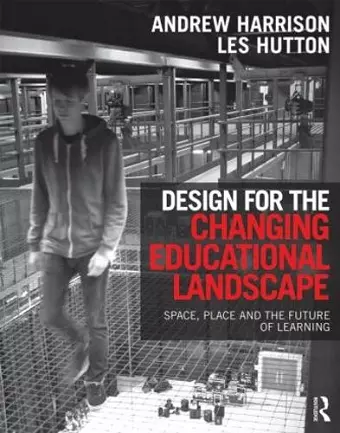Design for the Changing Educational Landscape
Space, Place and the Future of Learning
Andrew Harrison author Les Hutton author
Format:Hardback
Publisher:Taylor & Francis Ltd
Published:17th Oct '13
Currently unavailable, and unfortunately no date known when it will be back
This hardback is available in another edition too:
- Paperback£79.99(9780415517584)

This insightful guide explores the evolving educational landscape, emphasizing the need for innovative and integrated learning environments in Design for the Changing Educational Landscape.
The book Design for the Changing Educational Landscape serves as a comprehensive guide for architects involved in the design of learning environments, spanning from preschool to tertiary education. It acknowledges the significant transformations in space utilization, particularly in workplaces, where the emergence of distributed spaces has become a global trend. This shift is mirrored in educational settings, influenced by social, political, economic, and technological changes, alongside evolving theories of learning and teaching. The book emphasizes the importance of integrating all aspects of learning into a cohesive experience that supports community engagement.
In Design for the Changing Educational Landscape, the authors explore the various forces that shape the provision and pedagogical effectiveness of both physical and virtual learning spaces. The first part of the book examines the current state of the learning universe, tracing the evolution of its components and their responses to complex demands. It highlights the necessity for innovation within educational spaces and calls for greater integration among them to enhance overall performance.
The second part showcases numerous examples of innovative practices across different educational contexts, including schools, higher education campuses, and cultural spaces. However, it also notes a lack of integration among these innovations. The final section proposes a model that reimagines the learning landscape in terms of desired outcomes, aligning spatial needs and activities to optimize results. By advocating for an events-based identity among stakeholders, the book aims to guide the development of a fully integrated learning community.
"Overall, the book is successful in challenging existing use of learning space, and proposing new and innovative models for the future. Once you have read it, you are likely to re-evaluate your lab, classroom, studio –and the library –and the cafe –and the picnic bench -and even your own workspace, asking yourself how these potentially constraining environments be used to promote innovative practice in HE." – Katharyne McFarlane, Innovative Practice in Higher Education
ISBN: 9780415517577
Dimensions: unknown
Weight: 740g
312 pages